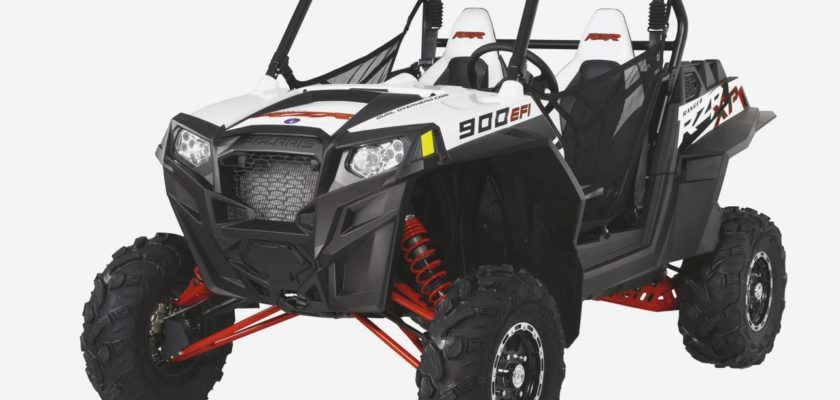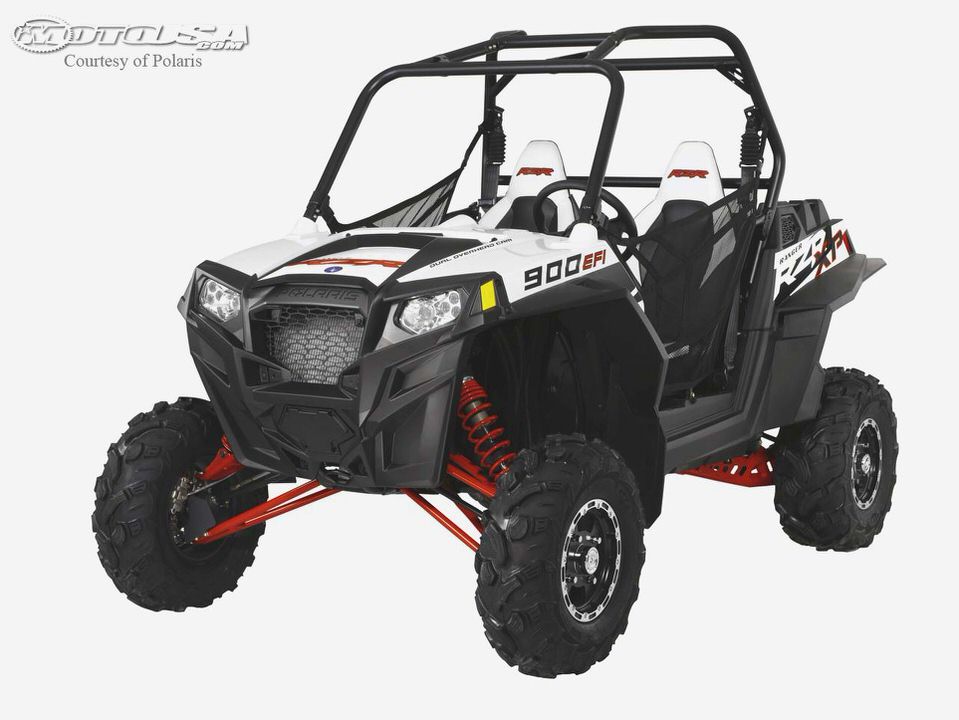
First Ride – Speed RZR
John Arens and Pete Bengel
Loyalty and old rivalries die hard and one the fiercest and most long standing rivalries in motorsports began when one guy figuratively kicked snow in the other guys face. Those old rivalries have expanded far from the frosty north all the way to the sweltering desert and today Polaris, Can-Am, and Arctic Cat go toe-to-toe with each other on every type of terrain.
Whether it’s ATVs, sleds, or Side x Sides, as one company releases a new model you can bet the other guys will up the ante with one of their own. In the Side x Side world Arctic Cat was the first to push high end performance with their Prowler 1000. Last year Can-Am countered with the awesome Commander 1000, and now Polaris is throwing down the gauntlet with their all new RZR XP900 and we were lucky enough to spend a day thrashing it in the desert.
XP Special Engine Features
The Polaris RZR XP900 is a Side x Side like no other. Visually it’s got the looks of a RZR on steroids, but that’s where the similarity ends. Polaris wanted to give the new RZR XP the same styling as other members of the RZR family, and most of the bodywork is the same with the exception of the long skirt that partially hides the lower chassis members and long travel suspension.
Make no mistake however, with a 900cc engine and long travel suspension it’s the only skirt the XP900 wears or hides behind! It’s really the suspension and motor that makes the RZR XP900 something special.
Polaris could have jammed the existing 850XP engine in a new chassis and been competitive, but rather than do half the job they also decided to go through the tremendous effort (Three YEARS in the making!) and expense to bring out a new engine to match the suspension. The new engine is called the ProStar 900 and it’s actually an 875cc, liquid cooled, DOHC, 4 valves per cylinder, twin cylinder engine fed by Electronic Fuel Injection.
Rather than pirate a design from the ATV or sled line the new engine is designed specifically for the rigors and load of a high performance Side x Side. A 750 watt charging system is included to power plenty of accessories, but even more important is the new transmission.
The XP900 engine uses a CVT transmission featuring Park, Reverse, Neutral, Low, and High, but it’s the design of the transmission that matters most. Gearboxes and drive shaft angle changes rob power and rather than give power away engineers designed the shaft drive system to eliminate all unnecessary shaft direction changes. The result is better efficiency, more power to the rear wheels and a quieter transmission.
The CVT also features a high performance clutch similar to top of the line snowmobiles with a roller secondary unit, and the strongest belt Polaris has ever used in any product. We were especially happy to find the CVT cover is easy to remove just above the left rear tire.
Also above the left rear tire is a unique air intake system designed to duct clean air efficiently into the dual throttle bodies, and a massive plenum holds a large volume of filtered air at the ready for when you crack the throttle. Think of the air plenum as “power on reserve” or warp drive if you happen to be a Trekkie! (Or Klingon, Vulcan, Romulan, or any other as yet unidentified intelligent being) Thankfully the intake tract has a large diameter tube with few bends, and overall distance to the throttle bodies is relatively short which all adds up to instant throttle response.
A flat, automotive style filter with a large total surface area should provide excellent filtration for all day rides in the dustiest conditions. Up front the radiator cooling capacity has been improved as well. Rather than stuffing in a larger heat exchanger core, cooling ability was improved by carefully ducting airflow through the bodywork and away from the vehicle.
Polaris claims a maximum 88 hp, 73 mph, and 29% better acceleration than anything else, but whatever the final numbers are, the new ProStar 900 has got it where it counts!
Maintenance items are a big factor for us, and changing the oil couldn’t be much easier unless you can talk your nephew into the job. The common Polaris oil filter is behind a small panel basically between the seat backs, the drain plug is easy to get to, and there is no reason to ignore the task when it’s this easy.
Desert Dreamin Suspension
The dream of every desert racer is long travel suspension and excellent ground clearance but it’s always been a custom built creation. The new XP900 comes with it right from the factory. At the front are a set of long dual A-arms offering 13.5 inches of wheel travel, but at the rear is where the real suspension magic begins. Rather than a dual A-arm Independent Rear Suspension, Polaris gave the new RZR XP900 a rear end like no other.
Serious desert racers have long used a trailing arm type suspension for maximum rear wheel travel with minimum geometry change through the shock stroke. The Polaris 3 link trailing arm system works the same way and offers an awesome 14 inches of wheel travel. Rather than rubber or plastic bushings Polaris gave the XP900 spherical bearing rod ends at all rear suspension pivots, and at both the front and rear are premium quality Fox Podium X 2.0 piggyback reservoir shocks.
Total width of the extra wide suspension is now 64 inches. Protecting the vital components is a solid, yet portly, quarter inch thick steel skid plate, and main chassis members are high strength steel tubes. One trick Polaris did learn with the super stable and plush RZR4 is that extra length smoothes out the ride. Thankfully the new XP900 wheelbase has been stretched 4.4 inches longer than the RZR-S which increases stability and helps harness the power from the engine.
Performance is only a throttle stab of your right foot away and we were also extremely happy to have the 4 wheel disc brakes which work excellent! As with the RZR-S, cast aluminum wheels with ITP XCT 900 tires get the power to the ground, at least when they’re actually touching it!
Thrillville Central
If you’ve driven any Polaris RZR you’ll be right at home on the new XP900. Control layout is pretty much identical, and as with the other RZR family members the new engine is behind the driver / passenger compartment. The advantage of a rearward engine placement is a lower seat and lower center of gravity.
A sturdy tube roll structure protects the occupants, 3 point seat belts hold you in place, and side nets keep everything inside just in case the unthinkable happens. Finally, the extra wide fender flares help keep any of the tire thrown debris off the driver and passenger. For thrilling night action, LED lights (another Polaris first) project a bright beam far into the darkness.
First Ride – The XP Express
Like just about everybody else we know, we couldn’t wait to hop inside the new RZR XP900, strap ourselves down, and point it at Mexico. The Arizona desert seemed just the place to do that!
Getting inside the newest RZR is easy enough, and we quickly settled into the seat and clicked the belt into place. Although the interior on all RZR models is a little more cramped than some competing brands we do like the lower seating position which helps with handling. The steering wheel easily swivels down to where it’s most comfortable for you, a combination digital/analog gauge package is mounted in the center of the dash, and a shift lever is found between the seats.
Just ahead of the passenger is a rubber mounted hand hold, and they’ll be needing it very shortly. We also really appreciate the new sealed glove box in the dash. At this point you could be inside any of the RZR models but that all changes with a twist of the key.
The new XP900 engine springs to life with a throaty growl, then the familiar thumping of a large displacement 4 stroke at idle. We revved the engine several times to check the idle rpms on the digital gauge, watched the temperature climb, and felt for vibration. At idle there is a noticeable flutter of the steering wheel and a few other components, but as the rpms climb the vibrations rapidly decrease.
While underway any vibration is undetectable. We snicked the gear shifter into High and headed into canyons and cactus.
Immediately we noticed the tighter, more responsive steering of the XP900. We liked the tighter steering ratio! After rolling through short whoops and winding around a few corners we found ourselves at the bottom of a sand wash and it was time to see what the XP900 could do.
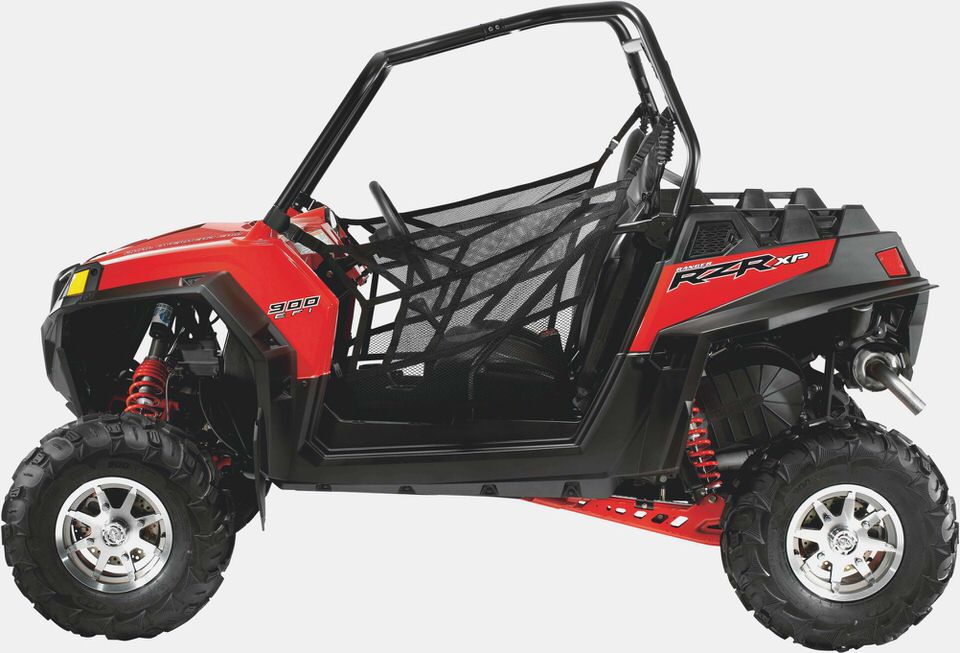
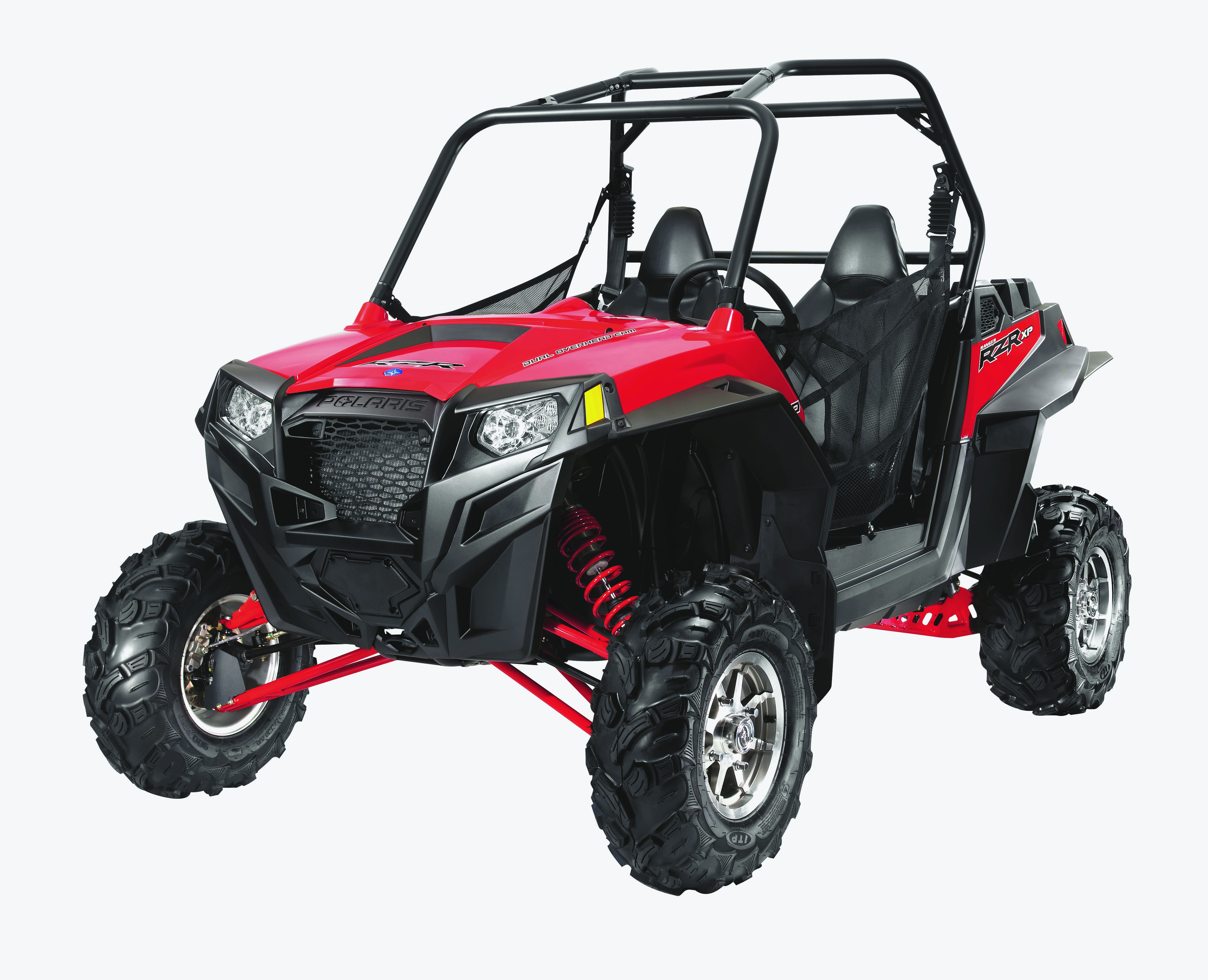
We stabbed at the throttle and the engine answered our challenge with an instant burst of power that pushes one back into the seat! We LOVE the sound! Within seconds we were sweeping down the wash like a burst dam, roost flying in every direction as the wheels clawed at the loose gravel and flung rocks behind like we were being shot at and the tires were returning fire.
While the rated horsepower is on par with other big bore numbers, the RZR XP900 accelerates stronger and quicker thanks to its lighter overall weight. The transmission shifts well, clutching was very good while under power and even when back shifting, with no noticeable lag. The big engine does offer quite a bit of engine braking when the throttle is still partially on, but little when your foot is lifted.
The wide, fast washes provided excellent grounds to test acceleration and how quickly it gets up to speed, but also the braking system. Thankfully the 4 wheel braking system works very well and quickly scrubs off speed with no suspension flutter or chatter like some competing systems.
Climbing out of the washes we found trails of every type, and long whoop sections which would test the suspension. We dove into the long, unevenly spaced whoops and stabbed at the throttle. The XP900 engine has enough snap to lift the front end or at least lighten it over the whoops or trail obstacles, and the rear suspension of the RZR XP900 works excellent!
Both ends take big hits with no problem, although the front can be a little harsh in short, choppy sections. We’re not complaining, but it’s our job to let you know! The back end is fantastic everywhere, and is extremely responsive to driver/engine input. When accelerating hard it doesn’t try to step out on you and seems to transfer the weight rearward, dig in, and launch you forward.
Overall weight balance front to back seems very good as well. We also like the tires which seem to be a good choice for all but the most serious dune lovers. Overall performance is outstanding!
The Little Stuff
The expression is “Don’t sweat the little stuff” but it’s our job to consider the “little stuff” that can often add up to a big problem. We didn’t find any big problems with the RZR XP900, but there are things to consider.
One thing we would possibly change with the XP900 is the throttle throw. The throttle lever makes the engine reach half throttle quickly, but then it takes a much longer throw to reach full rpms. Polaris almost certainly did this to help drivers reach a comfortable average setting, and it’s probably a good idea for many, but experienced drivers may want a more linear response.
We also found the air intake noise right behind the drivers head to be a little annoying at lower rpms, but we quickly got over it at higher speeds.
One thing we noticed in the first whoop section is the steering wheel can be a little “flexy”. This probably helps reduce impacts to your wrists, but it can be a little disconcerting on a 90 hp, high performance vehicle, and it leads us to another consideration.
There comes a point with all high performance vehicles whether ATV, UTV, aircraft, or even rockets called diminishing returns. Basically it means increased performance demands other part must be beefed up as well, which in turn then reduces overall performance, and the cycle continues.
The RZR XP900 approaches the point where future generations with higher horsepower would most likely require components to be strengthened, roll cages built stronger, deep, wrap-around seats to contain and isolate the occupants, 4 point restraints added, etc. We’ll gladly take it just the way it sits however.
RZR WRAPUP
Polaris certainly has answered the challenge of their long standing rivals. The new RZR XP900 is a land rocket! We knew they wouldn’t sit still for long, but we had wondered just what their move would be.
Now that the world has their answer, the question is what’s next?
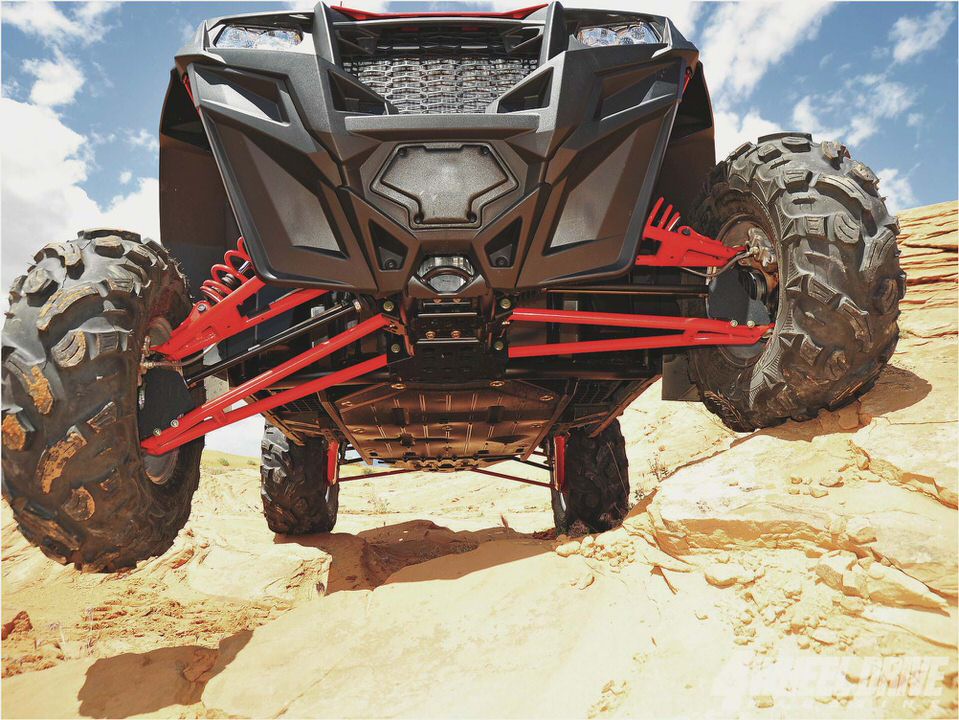
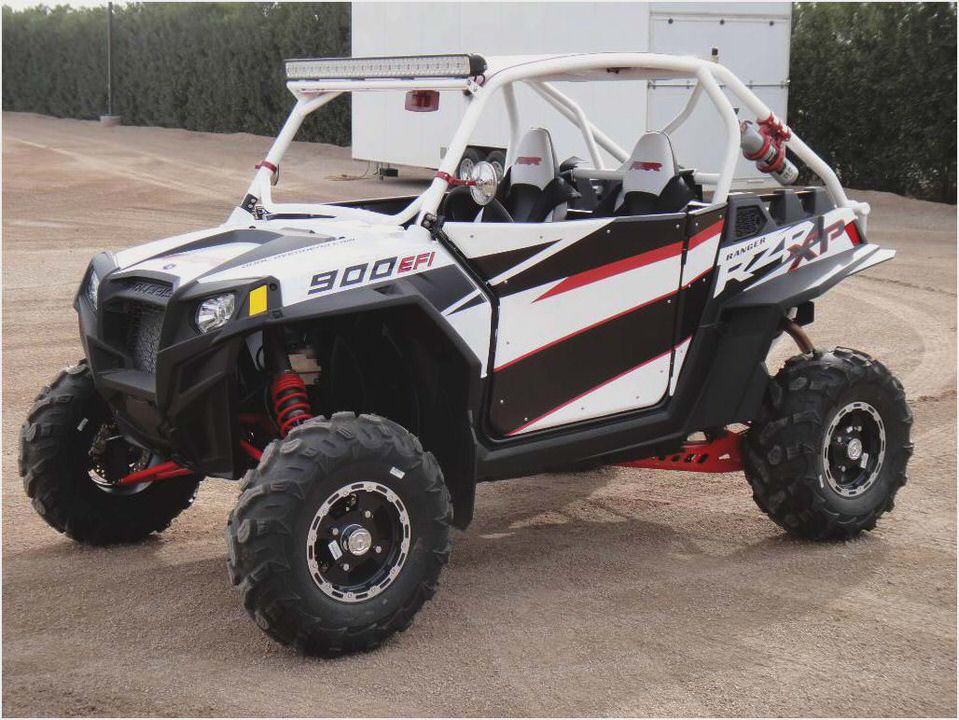
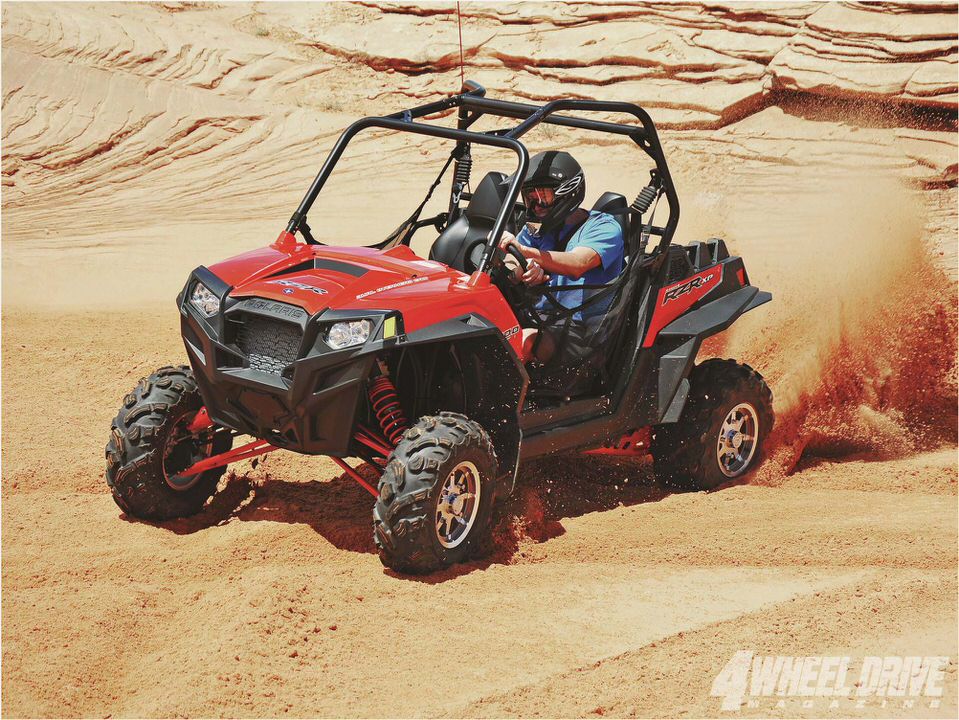
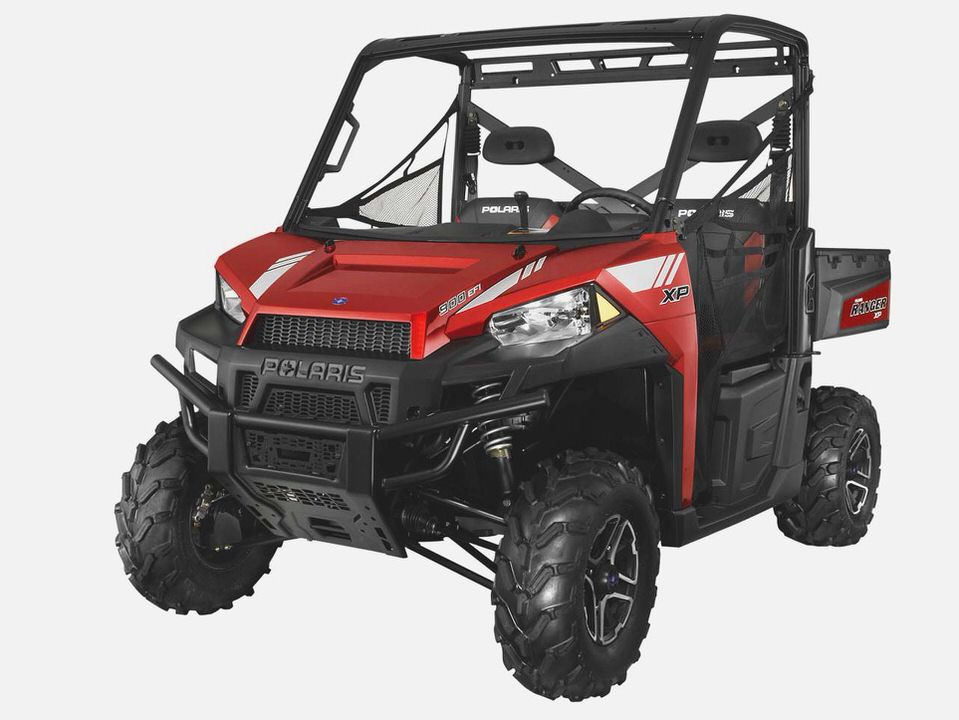
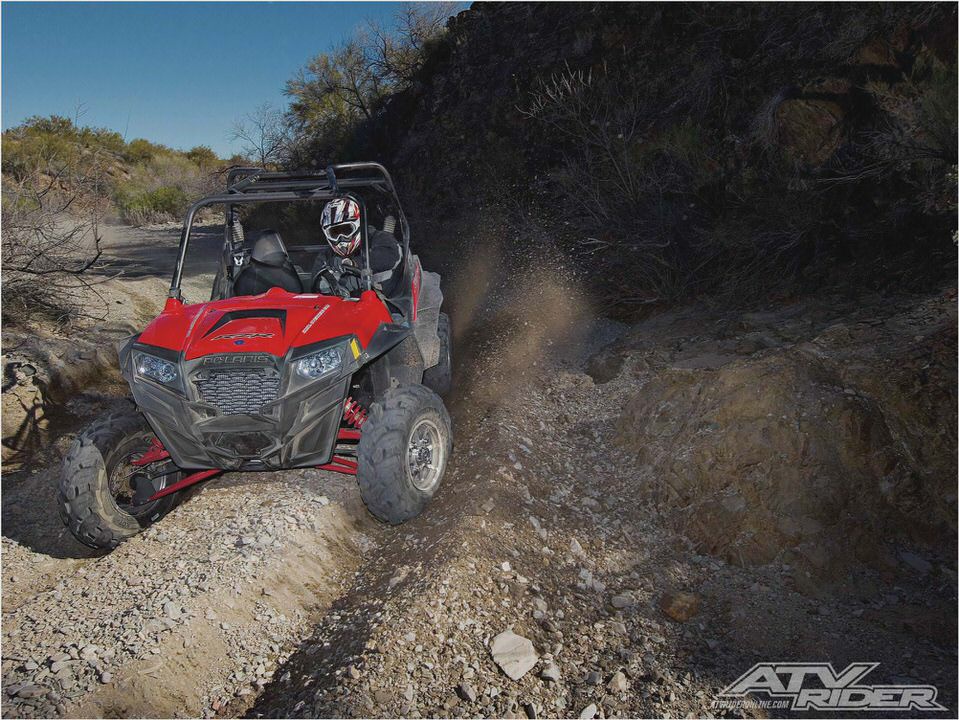
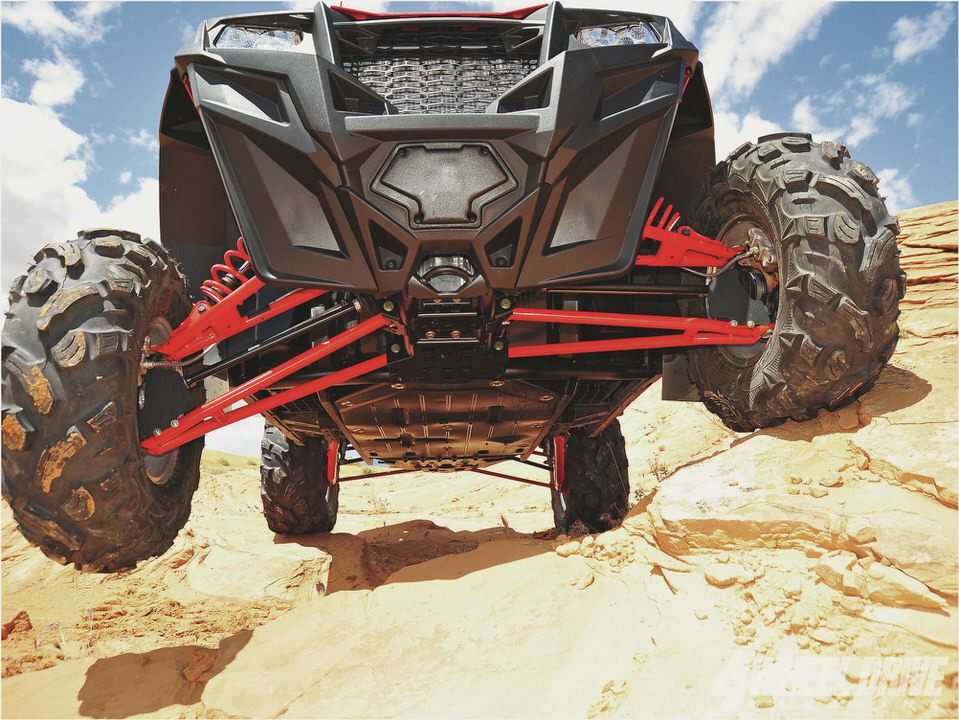
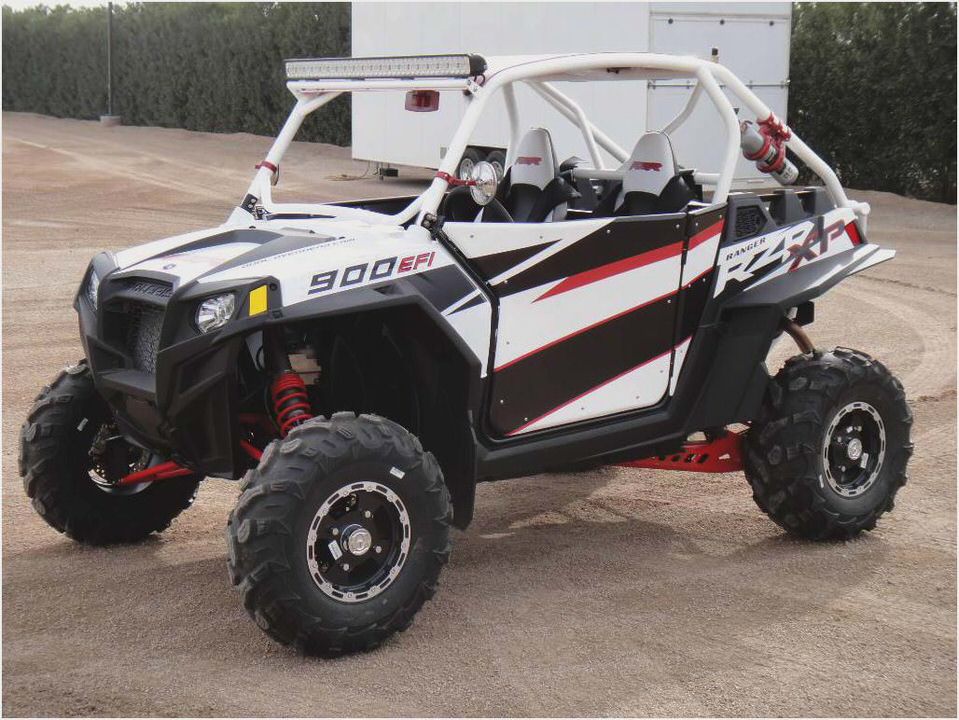
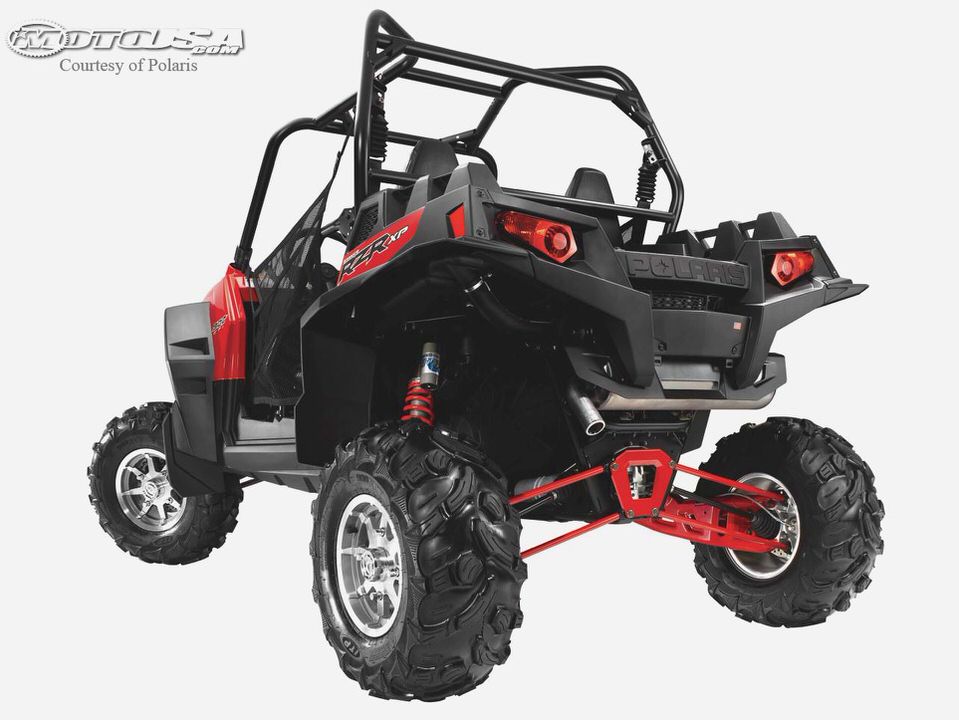
- 1999 POLARIS SCRAMBLER 400 ATV REVIEWS
- 2009 Polaris Scrambler 500 4×4 Review
- 2011 Polaris Sportsman 500 H.O. Review
- Specifications for a Polaris Xplorer eHow
- Polaris Scrambler 500 4X4 ATV Repair Manual 1997-2000 Clymer

